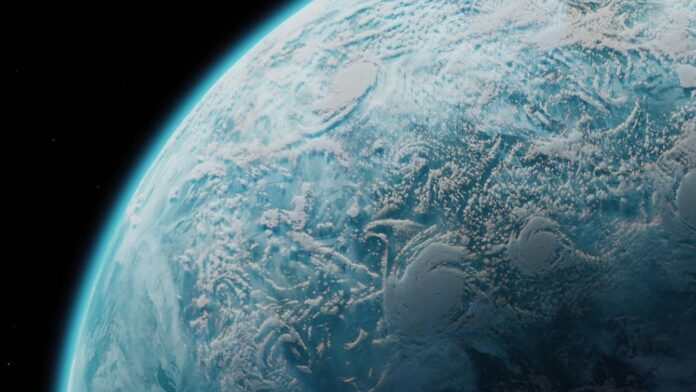 When scientists present a new research that shows the potential vital neglect on an external planet, follow -up articles are spread like ripples on a pool. The main media usually works with it, showing how the issue attracts people’s attention. The issue of life in other worlds is convincing. This is what happened recently with Exoplanet K2-18B, reports Universetoday.com.
When scientists present a new research that shows the potential vital neglect on an external planet, follow -up articles are spread like ripples on a pool. The main media usually works with it, showing how the issue attracts people’s attention. The issue of life in other worlds is convincing. This is what happened recently with Exoplanet K2-18B, reports Universetoday.com.
Science works when a society brings together people who adopt intellectual integrity, evaluate and discuss evidence. The discussion consists of papers published in the magazines that the pendants reviewed, where the researchers test each other’s ideas, asking new questions, and providing new evidence. The old saying that unusual claims require unusual evidence that apply here.
Since the announcement of the fact that K2-18B has shown signs of chemical biochemicals in its atmosphere, the follow-up papers questioned this idea. Professor Niko Madosodhan of Cambridge was the main author of the paper that provided evidence of the diathyl sulfide (DMS) and Dimethyl DisultPhide (DMDS) in the planet’s atmosphere.
“This is the strongest evidence but perhaps there is life there. I can really say that we can confirm this reference within a year to two years,” said Madocodhan. BBC. Madhusudan also indicated that more work is needed to understand what JWST discovered in the J2-18B atmosphere.
The last Madocodan paper is not the only one to provide evidence of vital abortion in K2-18B. He and his colleagues published earlier Ticket Which also discovered carbon dioxide and methane on the planet.
The latest response in the K2-18B conversation comes from a New paper Entitled “insufficient evidence for DMS and DMDS in the J2-18 B atmosphere. From a joint analysis of JWST NIRISS, Nirspec and Miri.” The main author is Rafael Locke of the Department of Astronomy and Astronomical Physics at the University of Chicago. The paper is presented to astronomy and astronomical physics and is available on arxiv.org.


The paper adds to the chorus of skeptical responses to the initial Madoseohan sheet.
“We have found that the data we have so far is very noisy to prove that it will be necessary to make this claim,” said lead author Locke. “There is not enough certainty to say in one way or another.”
The exfoliation of the layers of this scientific issue displays a deeper fact about science, JWST, and the current restrictions in the science of external planets that have not always been discussed in the main media. The important thing to be understood is that molecules like DM do not jump from data.
This planet is 124 years away, and this is where things become fair. Although we hear routinely about the distances in tens of thousands of light years or more in astronomy, 124 light years are still a very long distance. JWst is very strong, but it is not magic.
JWST simply collects data inappropriately, and scientists use models to find data patterns. There are multiple models, each with different strengths and weaknesses. Previous image of JWST spectra from K2-18B shows this. Data appears as yellow points and the model used to explain it in blue. There is no accurate match.
DMS discovery in this case really means discovering carbon and hydrogen hints, and the co -author of the study explains Michael Chang in a press release. “Anything with a carbon associated with three hydrogen will appear along a specific wave,” he said. “This is what Methyl sulfide has. But there are countless other vehicles that contain carbon and three hydrogens, and similar features will appear in Webb data. So, even with much better data, it will be difficult to make sure that the Methyl sulfide is what we see.”
Organic compounds such as methane, ethane and robin contain carbon and three hydrogen atoms. As well as compounds such as methyline, diathyl ether, and many others.
Ethan drew the attention of the researchers because he was found in Neptune’s atmosphere, where we can formally exclude life. OCCAM Hell tells us to choose the simplest interpretation of this most complex interpretation, in which case, the ethane can be the simplest interpretation of DMS panels in the atmosphere of K2-18B.


The authors write: “Ethan has a very similar chemical structure to DMS.” They explain that it is a common secondary result of optical methane decomposition and that it is “the most abundant hydrocarbons that predicted the neutral optical chemistry simulation of K2-18 B” in other research.
“We should only offer strange particles in the interpretation after excluding the molecules that we expect to be in the air,” said Caroline Piolite Gorib, the author participating in the study.
Another criticism aimed at discovering DMS in K2-18B related to the number of notes. The Madhusudhan paper is based on only one set of notes. But the new paper from Luque and the participating authors throw its net broader scale.
“We are testing the durability of the suggested DMS/DMDS through Niriss and Nircelc modeling simultaneously with Miri spectrum, taking into account different data discounts and modeling options,” the authors write.
They also point out that the previous notes with Hubble and with JWST, when associated with the most modern notes, weaken the DMS condition.
We find that other general hydrocarbons can provide an alternative explanation for the supposed and proposed spectral features
The researchers say that to achieve a strong spectral discovery for DMS, JWST will need to monitor K2-18B for 26 transit. Unfortunately, this may take more than six years. “We note that due to the star’s position in the sky and the long tropical period on the planet, there are usually only four transit chances with JWST every year,” they write.
K2-18B is an interesting planet, but we also need to remember that we are not sure of the planet type. It is a sub -game of the mass, but it may be the world of Hycean or a miniature Neptune without a residence.
We all make sure of certainty, but it can be a long time coming. The discovery of the final life elsewhere will be a decisive moment for humanity. Scientific debate about K2-18B shows us that we have not been flooded yet, but also shows us the way forward.
“The answer to whether a life outside the solar system is the most important question in our field. This is why we are all studying these planets,” Locke said. “We are making tremendous progress in this field, and we do not want to be overcome with early ads.”

